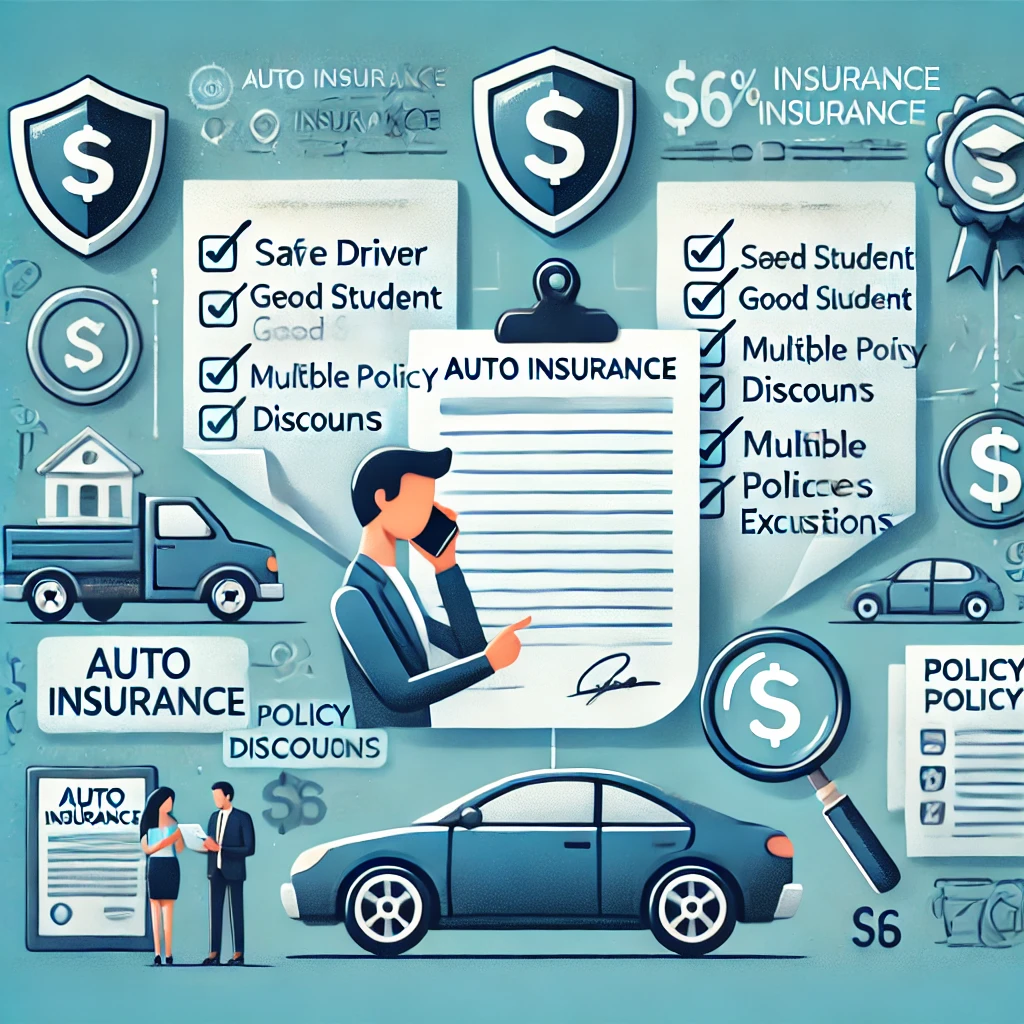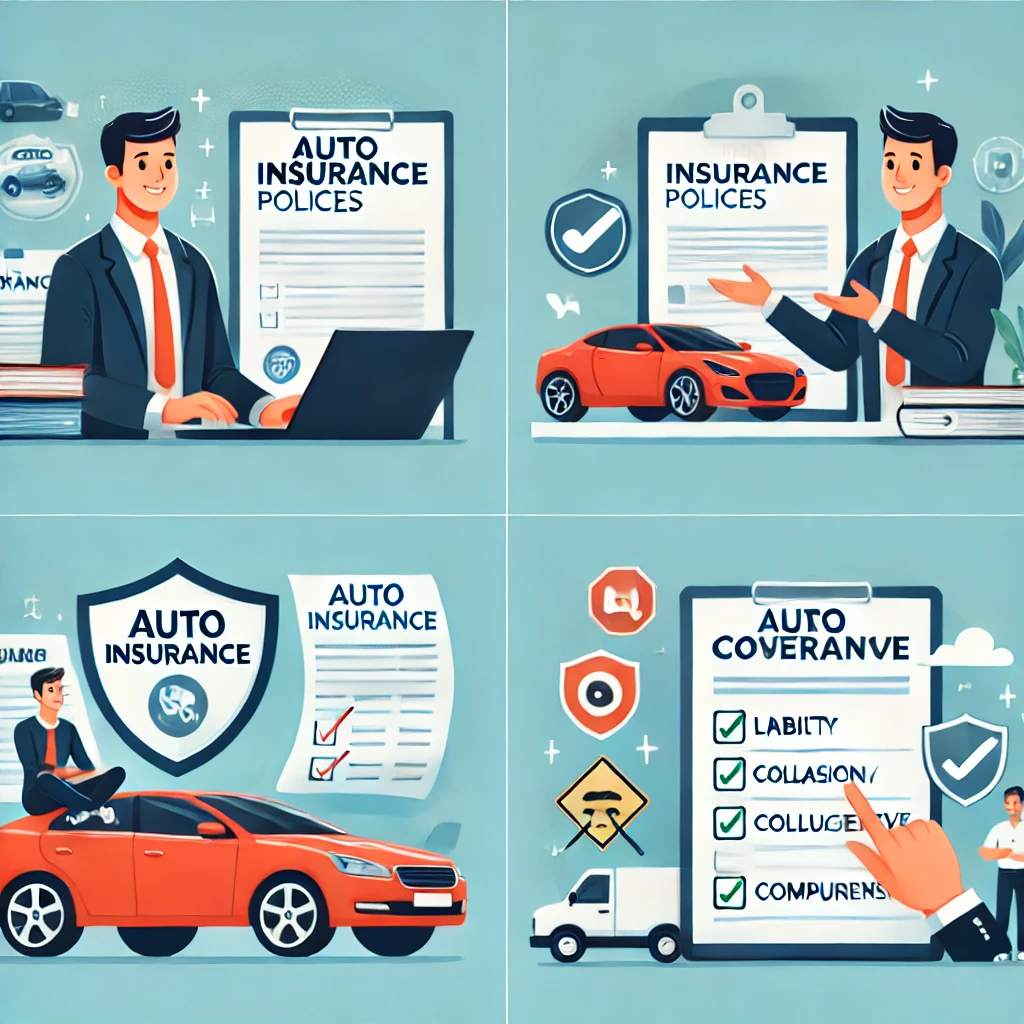The first step in picking the right car insurance is knowing what you need. Think about these factors:
- Your Car: The type of car you drive affects how much your insurance will cost. Sports cars, luxury cars, and fast cars usually have higher rates.
- Your Driving History: If you have a clean driving record with no accidents or tickets, you’ll pay less for insurance.
- The Coverage You Need: Think about how much protection you want based on how often you drive, your car’s value, and your finances. Common coverage types include:
- Collision (for accidents)
- Comprehensive (for theft or damage not caused by a crash)
- Liability (if you cause an accident)
- Uninsured/underinsured motorist coverage (if the other driver doesn’t have enough insurance).
- Your Budget: Decide how much you can afford to spend on insurance. This will help you choose a policy that fits your finances.

Research and Compare Insurance Companies
After you figure out what kind of car insurance you need, the next step is to compare different insurance companies to find the best one. It’s not just about finding the cheapest option—you want to make sure you get the best coverage, service, and value. Here’s what you should look at:
1. Company Reputation
Before choosing an insurance company, check out its reputation. You want a company that is reliable and treats its customers well. Here’s what to consider:
- Customer Service: Make sure the company has friendly and helpful customer service. This can be really important if you need to file a claim or ask questions.
- Financial Strength: The company should be financially stable, meaning they have enough money to pay for claims. You can look at ratings from places like AM Best or Standard & Poor’s to see how strong they are.
- Claims Process: Pick a company that handles claims quickly and fairly. You don’t want to wait a long time to get your claim processed, especially if your car needs repairs.
2. Coverage Options
Not all insurance companies offer the same types of coverage. When comparing companies, check:
- Basic Coverage: Make sure they offer the basic coverage you need, like liability, collision, and comprehensive.
- Extra Coverage: Some companies offer extras like rental car coverage, roadside assistance, or gap insurance. If these are important to you, make sure they’re available.
- Customizable Plans: It’s good to choose a company that lets you adjust your plan to fit your needs, so you don’t have to pay for coverage you don’t need.
3. Price
While cost is important, it’s not the only thing to think about. Get quotes from a few companies and compare them. Keep these in mind:
- Premiums: This is how much you pay for your policy. Make sure the quotes are for the same types of coverage so you’re comparing fairly.
- Deductibles: A lower premium might mean a higher deductible, which is the amount you pay out of pocket if you have a claim.
- Coverage Limits: Double-check the limits to make sure you’re getting enough coverage. Lower limits might mean cheaper premiums, but they could leave you unprotected in a big accident.
4. Discounts
Many companies offer discounts that can help lower your insurance cost. Look for:
- Safe Driver Discount: If you have a clean driving record, you could pay less.
- Good Student Discount: Some companies give discounts to students with good grades.
- Bundle Discount: If you get more than one type of insurance (like car and home insurance) with the same company, you can usually get a discount.
- Safety Features Discount: If your car has safety features like anti-theft devices or airbags, you might qualify for a discount.
- Low Mileage Discount: If you don’t drive much, some companies may offer you a lower rate.
Ask each company about the discounts they offer to see if you can save money.
5. Customer Reviews
Customer reviews can give you a good idea of what to expect. Look for:
- Claims Process: See what people say about how easy or difficult it was to file a claim and if they were happy with the payout.
- Customer Service: Read reviews to find out if the company’s representatives are friendly and helpful.
- Overall Experience: Check what most customers think about their coverage, prices, and service.
- Where to Look: You can read reviews on websites like J.D. Power or Trustpilot, or check social media for feedback.
By taking the time to research and compare companies, you’ll find the best car insurance that gives you good coverage, service, and value for your money.
Understand the Types of Coverage
Car insurance usually includes several types of coverage. Here’s a quick overview:
- Liability Coverage: Pays for damage or injury to others if you cause an accident.
- Collision Coverage: Covers damage to your car in an accident, no matter who’s at fault.
- Comprehensive Coverage: Covers damage from things like theft, fire, or natural disasters.
- Uninsured/Underinsured Motorist Coverage: Protects you if you’re hit by a driver without enough insurance.
Think about your needs and budget to decide which coverages are most important for you.
Get Quotes and Negotiate
Reach out to different insurance companies and ask for quotes based on the coverage you want. Be ready to share details about your driving record and car. Once you get a few quotes, try to negotiate to get the best deal possible.
Review the Policy Before Buying
Before you buy a policy, go through it carefully. Make sure you understand the coverage limits, deductibles, and any exclusions. If anything is unclear, ask questions.
Consider Extra Coverage
On top of standard coverage, you might want to add:
- Rental Car Coverage: Pays for a rental car if your vehicle is being repaired after an accident.
- Roadside Assistance: Helps with things like towing, flat tires, or jump-starting a dead battery.
- Medical Payments Coverage: Covers medical bills for you and your passengers, no matter who caused the accident.

Keep Your Policy Up to Date
Your insurance needs might change over time, like if you buy a new car or start driving less. Check your policy every year to make sure it still works for you.
Conclusion
Choosing the right car insurance takes some thought, research, and comparison. By following this simple guide, you can find a policy that gives you the coverage you need at a good price. Don’t forget to review your policy regularly and make changes when needed.




